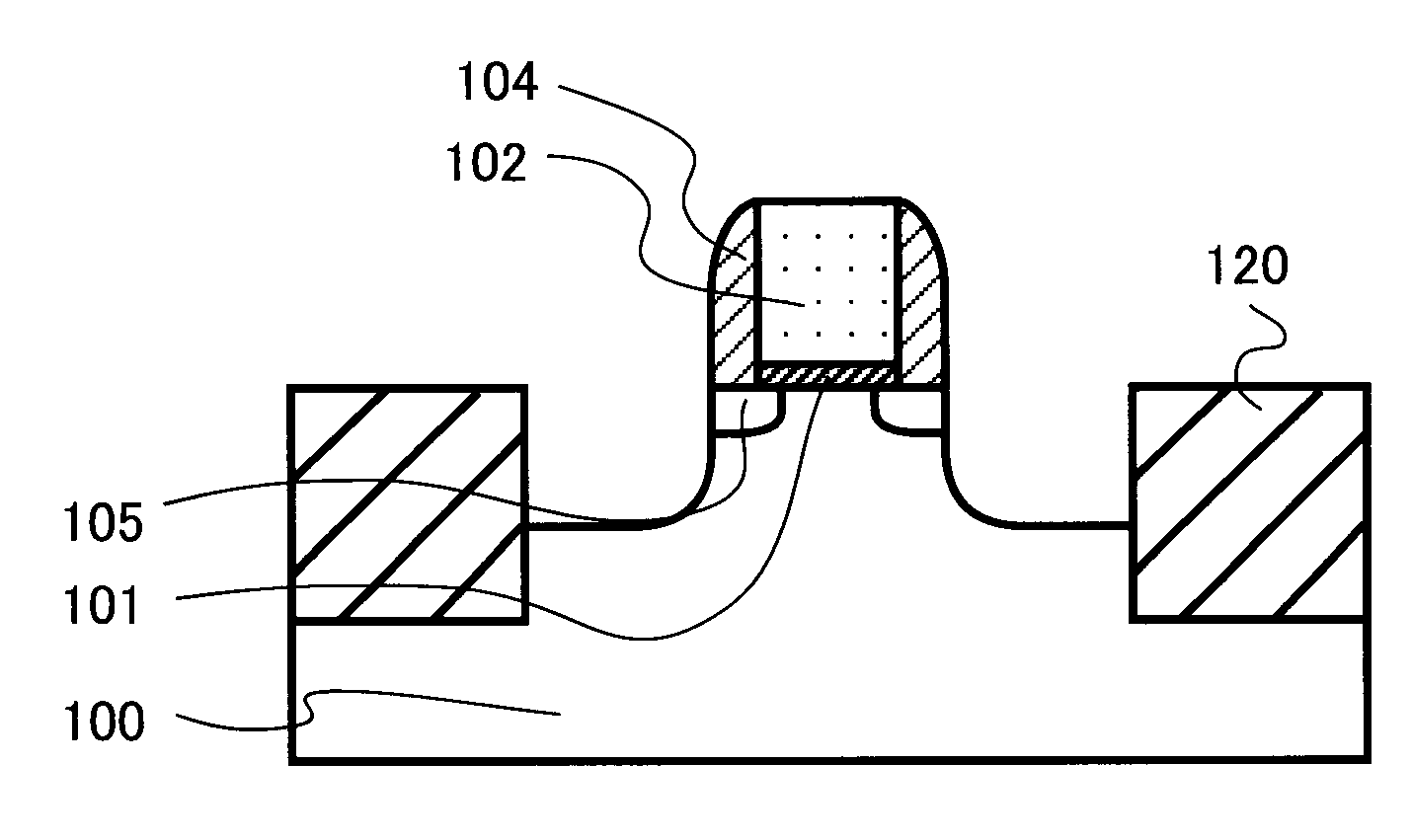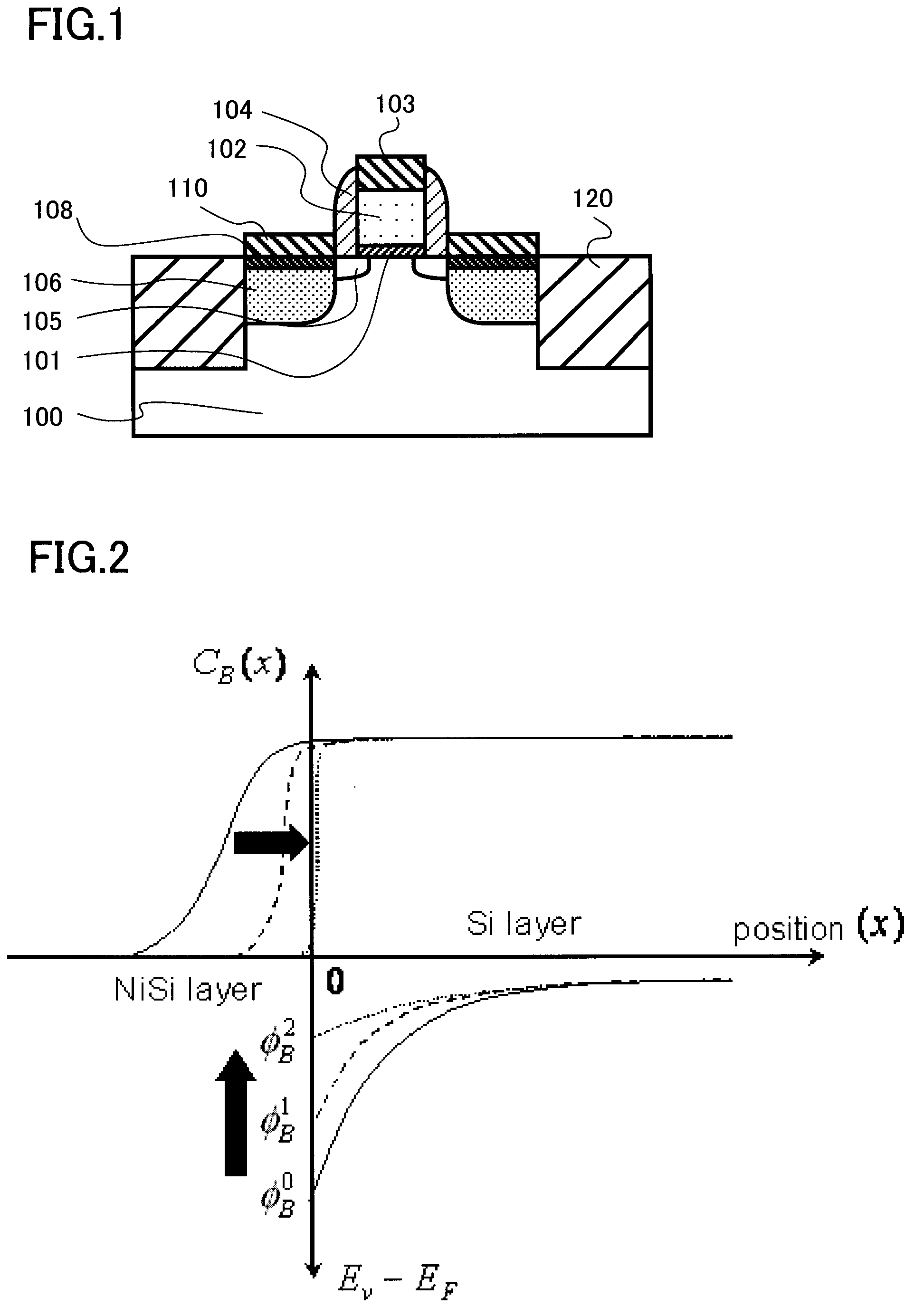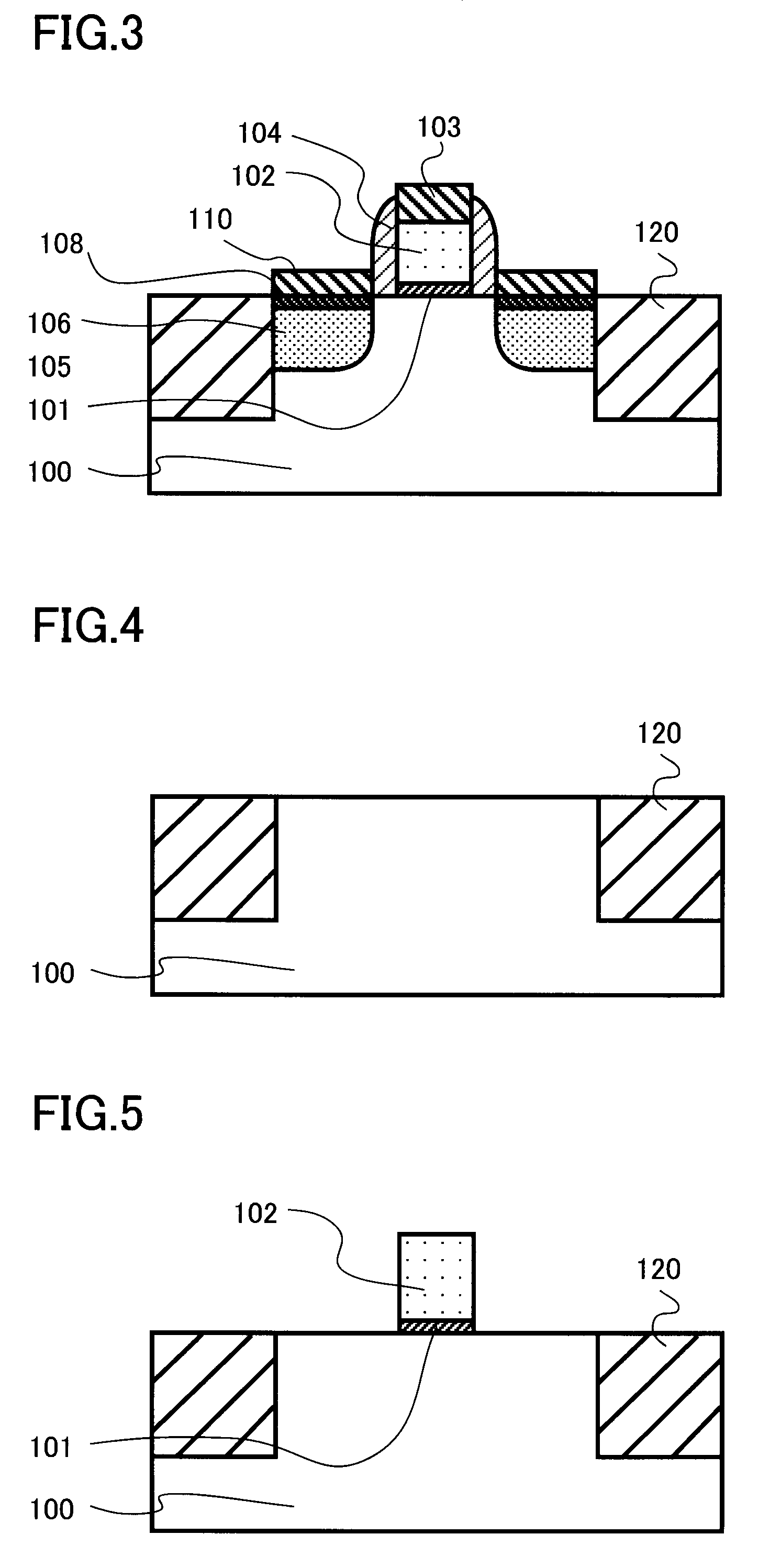Method of fabricating semiconductor device and semiconductor device
a semiconductor and semiconductor technology, applied in the field of semiconductor devices, can solve the problems of difficult to increase the impurity concentration at the interface between silicide film b, physicality limits, and the inability to achieve higher performance by nano-scale miniaturization of on-chip devices, and achieve the effect of preventing or suppressing the occurrence of junction leakage, low resistance junction interfaces, and reducing the number of junction leakages
- Summary
- Abstract
- Description
- Claims
- Application Information
AI Technical Summary
Benefits of technology
Problems solved by technology
Method used
Image
Examples
first embodiment
[0049]A semiconductor device having a metal insulator semiconductor field effect transistor (MISFET) in accordance with an embodiment of this invention is depicted in cross-section in FIG. 1. The MISFET is illustratively a p-conductivity type MISFET (pMISFET), which has a pair of laterally spaced-apart portions of a SiGe layer on the both sides of a channel region and a nickel silicide (NiSi) layer that is formed above SiGe layer with a heavily-doped impurity region interposed therebetween. In the description, the term first conductivity type refers to either one of n-type and p-type whereas the term second conductivity type is the other of them. The first and second conductivity types are different from each other.
[0050]More specifically, a silicon (Si) substrate (first semiconductor region as claimed) 100 of n-type conductivity has a top surface of a (100) surface orientation, which is doped with a chosen impurity, e.g., phosphorus (P), to a concentration of about 1015 atoms / cm3. ...
second embodiment
[0081]A semiconductor device structure having a MISFET in accordance with another embodiment of this invention is shown in FIG. 14 in cross-section. This device is similar to the pFET shown in FIG. 1 except that the former has a fully silicided (FUSI) structure with its gate electrode being formed of NiSi gate silicide layer 103 only.
[0082]This semiconductor device of FIG. 2 offers the functionality and advantages stated previously and also is capable of suppressing depletion on the gate electrode side during transistor driving within an extended range up to a higher gate voltage owing to the use of FUSI structure to thereby enable achievement of enhanced transistor drivability.
[0083]A fabrication method of the FIG. 14 device is similar to the method shown in FIGS. 4 to 13 except that the step of FIG. 12 for sputtering the Ni film 150 and performing silicidation by annealing is modified to perform the annealing for an increased length of time period until the polysilicon gate electr...
third embodiment
[0087]A semiconductor device having a MISFET to be formed by a fabrication method in accordance with still another embodiment of the invention is shown in FIG. 15 in cross-section. This device has an nFET of FUSI structure with its gate electrode being made up of only a silicide monolayer 103 made of NiSi and a pair of NiSi S / D electrodes 110. The device also has at selected substrate surface portions a couple of heavily-doped n (n+) type impurity regions 208, each being doped with As and C impurities to a concentration of 1021 atoms / cm3 or greater but less than or equal to 1022 atoms / cm3. The presence of these n+-type S / D regions 208 is a unique structural feature of this embodiment.
[0088]A feature of this nFET lies in that the NiSi layer is high in impurity concentration at its substrate interface due to the presence of the n+-type S / D regions 208 so that the interface resistance is low. Another feature is that n+-type regions 208 serve as the barrier against unwanted diffusion of...
PUM
 Login to View More
Login to View More Abstract
Description
Claims
Application Information
 Login to View More
Login to View More - R&D
- Intellectual Property
- Life Sciences
- Materials
- Tech Scout
- Unparalleled Data Quality
- Higher Quality Content
- 60% Fewer Hallucinations
Browse by: Latest US Patents, China's latest patents, Technical Efficacy Thesaurus, Application Domain, Technology Topic, Popular Technical Reports.
© 2025 PatSnap. All rights reserved.Legal|Privacy policy|Modern Slavery Act Transparency Statement|Sitemap|About US| Contact US: help@patsnap.com



